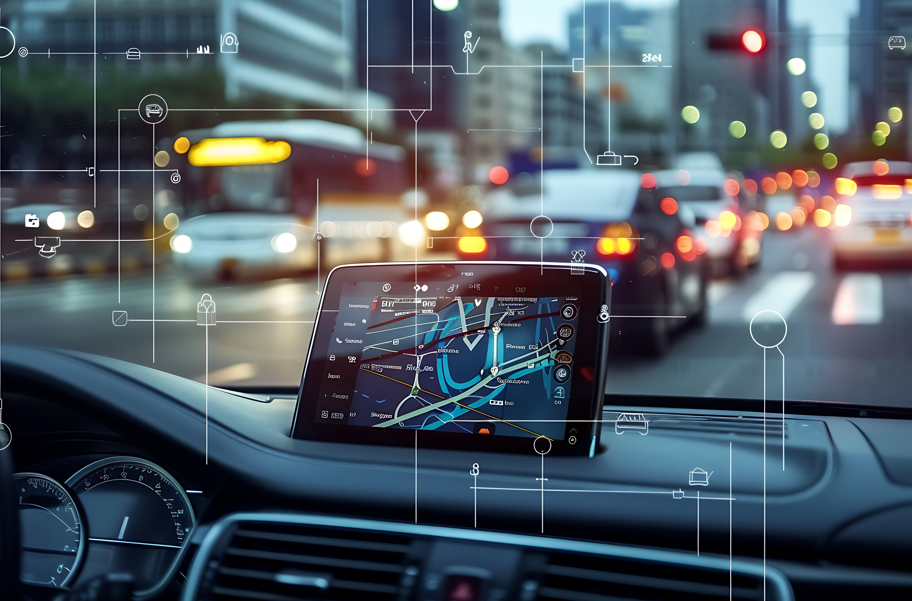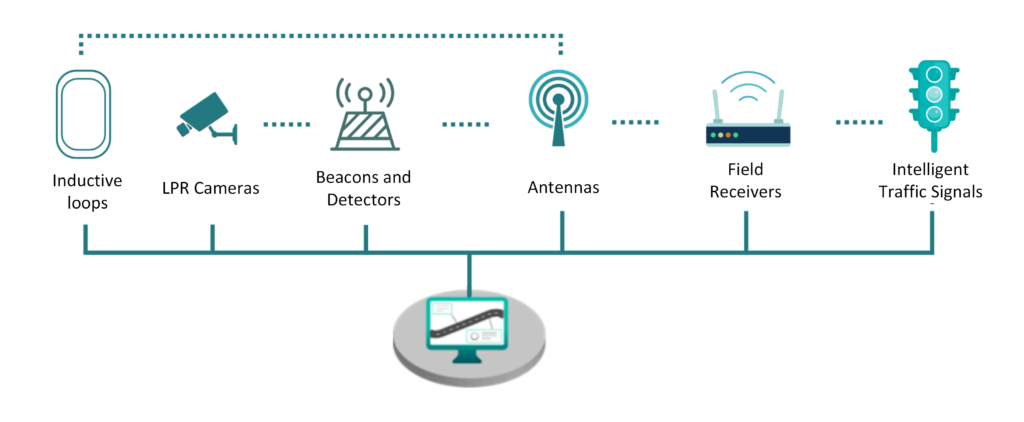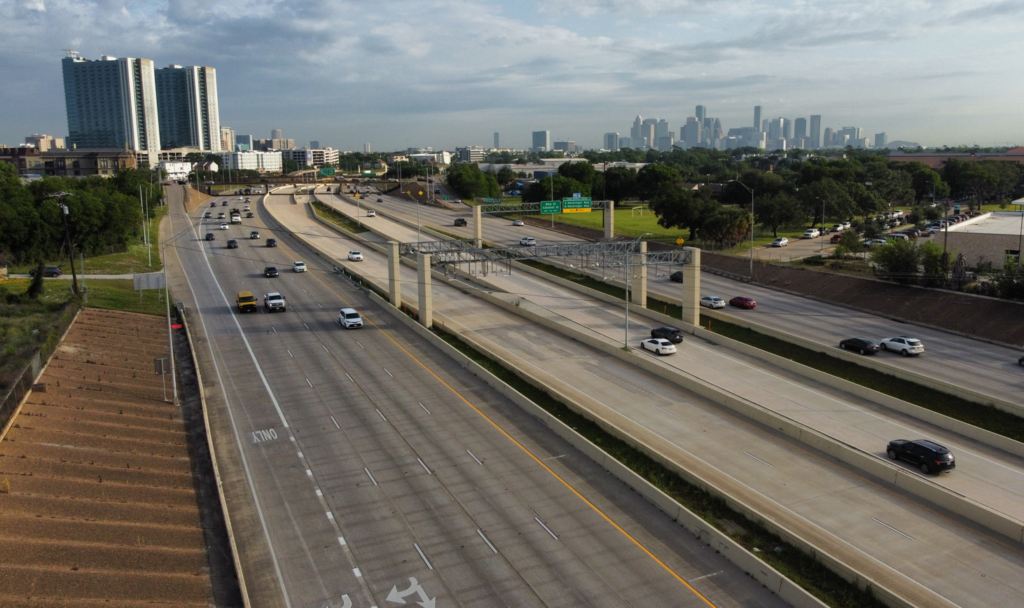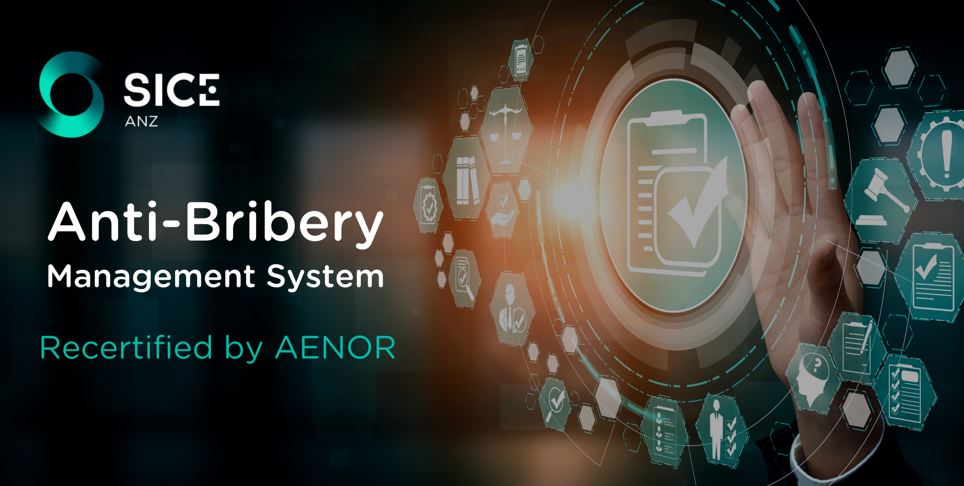Enhancing the efficiency of public transport is one of the major challenges in today’s urban mobility landscape. Ensuring that buses, trams, light rail, and other collective modes can circulate smoothly and safely is essential to delivering a reliable and sustainable service in cities. In this context, traffic signal priority technologies have emerged as a key tool to address current challenges, optimizing travel times, reducing energy consumption, and improving road space efficiency. It is important to note that signal priority also applies to emergency vehicles such as ambulances, fire services, and state security bodies.
Smart priority for public transport enables the adjustment of signal group timings in response to the presence of priority vehicles, optimizing their passage with minimal impact on the rest of the network.
Current Challenges Include:
- Avoiding Congestion: Heavy traffic affects public transport punctuality and generates economic losses.
- Sustainability: Reducing emissions and energy consumption is essential to meet climate objectives.
- Efficiency: Optimizing travel times and improving user experience are key factors to encourage collective transport use.
Against this backdrop, traffic signal priority stands out as a technological solution that gives preference to public transport at intersections, improving urban mobility.
Different priority algorithms allow defining the most suitable strategy for each use case, ranging from absolute priority—such as in tram or light rail projects—to relative priority, which facilitates the passage of priority vehicles with minimal disruption to other traffic.

Smart Traffic Signal Priority for Public Transport
Implementing priority for public transport combines various detection, communication, and signal control technologies. Detection can be achieved through strategically placed sensors, on-board beacons, and infrastructure beacons connected to intelligent controllers or centralized management platforms. All components work together to ensure that priority vehicles are identified and granted passage automatically, safely, and in a coordinated manner.
SIDERA TRAFFIC integrates this functionality within a holistic vision of urban mobility. The platform dynamically manages the traffic signal network, adapting parameters in real time according to demand and road conditions. Its modular, multi-algorithm architecture enables the combination of priority algorithms with time-based strategies, dynamic selection, adaptive generation, or micro-regulation, offering flexibility and responsiveness to any traffic scenario.

Technologies Enabling Traffic Signal Priority
Several technologies support the management of signal priority and coordination between public transport and urban traffic control systems:
- Direct Communication: OAS – Traffic System
Enables real-time data exchange between both environments. The OAS (Operation Aid System) collects and transmits information on vehicle location, status, and scheduling, while the traffic system uses this data to adjust signal timing and facilitate bus passage based on predefined criteria. - Cooperative Systems and V2X Communications
These systems allow direct communication between vehicles and roadside infrastructure. Equipped vehicles (OBU) communicate with roadside units (RSU) at intersections, sending priority requests or status updates. - Beacons / Antennas
Short-range communication (generally by radiofrequency) devices installed at strategic points to identify authorized vehicles and trigger priority events automatically. - GPS-Radio Beacons
Medium-range devices (generally by radiofrequency) installed on controllers or signal elements, providing full coverage of priority vehicle routes and enabling adaptive priority adjustments. - License Plate Recognition Cameras
Used in conjunction with whitelist databases to identify priority vehicles and activate priority algorithms. - AI Cameras
Capable of detecting public transport vehicles (e.g., buses) and even identifying the associated route, allowing controllers to anticipate priority movements. - Inductive Loops
Applicable on reserved lanes or combined with on-board antennas to distinguish priority vehicles from others.
These technologies enable the design of flexible, scalable solutions tailored to the needs of each urban environment.

Tram Priority in Alcalá de Guadaira
A representative example is the implementation of signal priority for the Alcalá de Guadaira tram, where a beacon-based detection system communicates directly with intersection controllers. As the tram approaches, devices send a signal to adjust the signal sequence, opening the corresponding phase to ensure safe and preferential passage. Once the intersection is cleared, the system automatically restores normal sequencing, maintaining traffic flow. Such solutions, successfully deployed in real environments, demonstrate that prioritization not only improves commercial speed for public transport but also contributes directly to sustainability and emission reduction in urban areas.

Integration with Management Platforms
SIDERA TRAFFIC, developed by SICE, integrates traffic signal priority into a unified mobility management system.
Beyond priority integration, it coordinates with other platform functionalities to ensure comprehensive and efficient urban mobility management.
Smarter, Collective Mobility
Prioritizing public transport is not merely a technical improvement, it is a strategic decision. Giving preference to buses or trams at traffic signals means committing to a more efficient, equitable, and environmentally responsible mobility model.
By reducing travel times and improving service regularity, prioritization strengthens the competitiveness of public transport against private vehicles, fostering a shift in citizens’ mobility habits.
Through solutions like these and the expertise gained from real-world prioritization projects, SICE reaffirms its commitment to the digital transformation of urban mobility.






